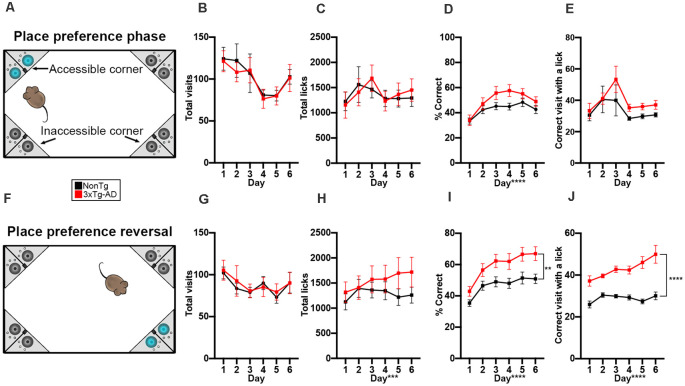Figure 3.
3xTg-AD mice performed similarly to NonTg mice in learned place preference but later performed better than NonTg mice in the reversal phase of the IntelliCage. (A) During the 6 days of the learned place preference phase, animals were assigned to one corner where they could access water. All other corners were counted as incorrect and allowed no access to water; cage not drawn to scale. (B,C) We found no significant differences in total visits and licks during the place preference phase. (D) We found a significant effect of day for % correct, illustrating learning across the 6 days, but no genotype differences were detected. (E) No differences were detected in the correct visits with ≥1 lick. (F) During the 6 days of the place preference reversal phase, animals could access water by entering and nosepoking the opposite corner from the corner assigned during the learned place preference phase; cage not drawn to scale. (G) No differences in total visits across the 6 days were detected. (H) We found that total licks increased across the 6 days (p < 0.001). (I) We found that 3xTg-AD had a higher % correct than NonTg (p < 0.01). Additionally, % correct increased across the 6 days (p < 0.0001), illustrating learning. (J) We found that 3xTg-AD mice made more visits to the correct corner with ≥1 lick than NonTg mice, illustrating that 3xTg-AD mice were motivated to enter the correct corner to drink. Additionally, correct corner visits with ≥1 lick increased across the 6 days (p < 0.0001). Data are presented as means ± SEM. **p < 0.01, ***p < 0.001, ****p < 0.0001.

